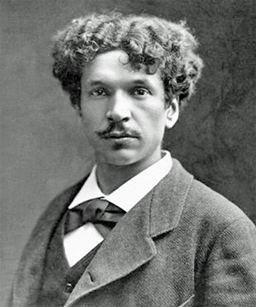
Charles Cros: The Paléophone ProcessCharles Cros proposed a means of reproducing sounds from Scott’s phonautograms weeks before Edison explicitly considered similar possibilities. Edison made a machine that demonstrated his ideas; Cros did not. Who, then, was the first to invent sound reproduction? The idea that sound could be captured and retrieved at will is an old one in French literature. In the 16th century Rabelais wrote of the sounds of a fierce battle, frozen in ice by an early winter, becoming audible in the spring as the ice thawed. In the 17th century Cyrano de Bergerac imagined clockwork books that spoke to their readers, and Sorel fantasized about sponges absorbing spoken messages and releasing the messages when squeezed. 
Just as light captures images on a polished plate, we will soon preserve the sonic undulations of an air by Mario, a tirade of Miss Rachel, or a couplet by Frederick Lemaitre. We will hang on the wall the serenade of Don Pasquale, the imprecations of Amille, Ruy Blas's declarations of love – each daguerreotyped one evening when the artist was in high spirits.
Charles Cros was well-situated to combine literary aspirations with technical approaches. He was a highly-regarded author of poetry and theatrical monologues in his day. Yet he’d studied medicine as a young man and avidly pursued interests in Victorian technologies. He suggested improvements to telegraph equipment. He invented a method of color photography and made some of the earliest color photographs. He proposed constructing powerful lights, mirrors, and lenses to communicate with the inhabitants of Mars or Venus. He was a man of energy and ideas. 
He jotted this idea onto a sheet of paper, sealed it into an envelope, and deposited it with the French Academy of Sciences in April 1877 – weeks before Edison independently concluded that he could build devices to “store up and reproduce automatically at any future time the human voice.” Cros’ method required a series of photographic and chemical engraving processes; Edison’s purely mechanical approach required none of that. Cros did not have the resources to prototype his idea; Edison did. When news of Edison’s phonograph reached Paris, Cros asked the Academy to open his sealed packet to prove the priority of his concept. But unlike Scott and Edison, Cros did not build what he conceived. In fact, his patent application, filed in Paris several months later, did not include a single drawing or diagram to illustrate how his concept might look or work in practice. Indeed for most of 1877 Cros had no name for his idea. He eventually christened it the “paléophone” – from the Greek palaios (ancient) and phon (voice). 
Académie des sciences-Institut de France
This exhibit continues here: Frequently Asked Questions Go back to Edison's Path to the Phonograph [ Return to Who Invented Sound Recording? ] [ Return to The Origins of Sound Recording opening page. ] ——————————
|
Last updated: July 17, 2017
